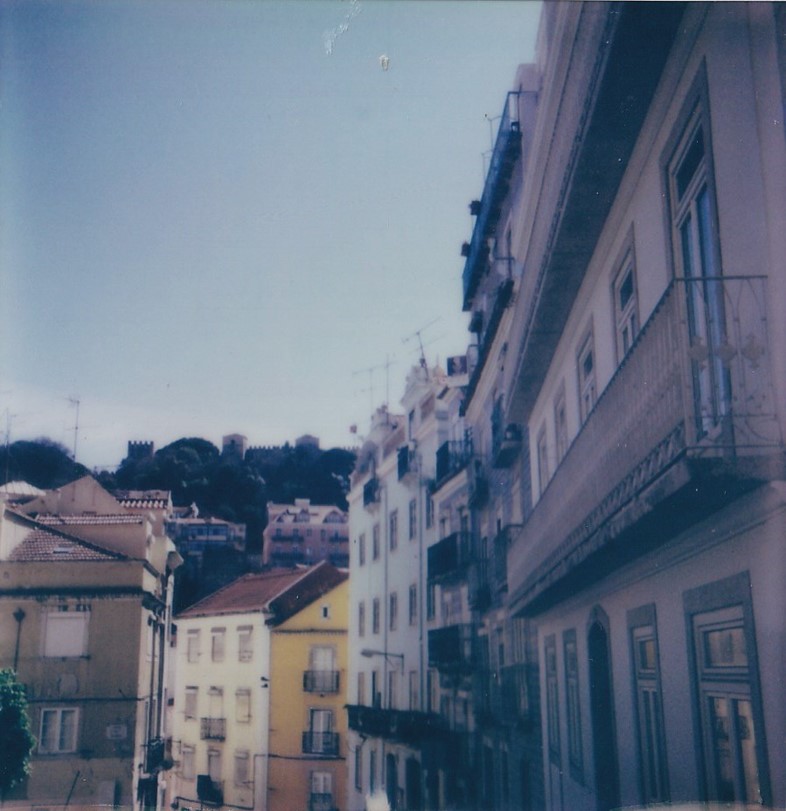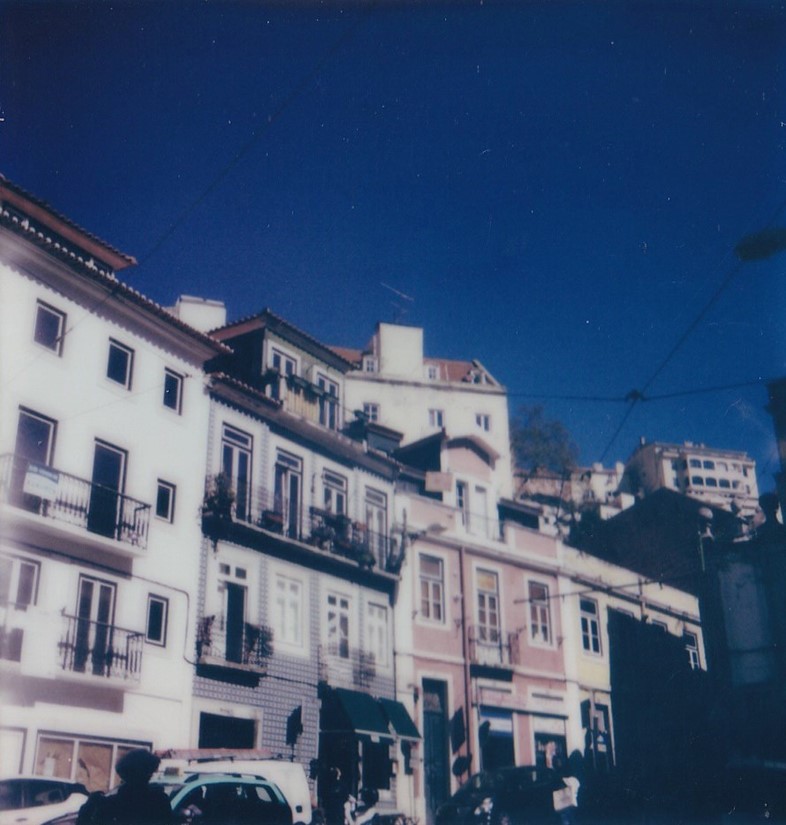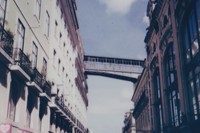From one of the world’s most impressive private art collections to an eccentric bar with an excellent cocktail list, here are the best things to see, eat and drink in Lisbon
Introducing a new series of alternative city guides, specially curated for the cultivated traveller.
By this point, Lisbon can no longer be described as “underrated”. The Portuguese capital has, over the last decade, risen to prominence as one of the most raved-about destinations in Europe. No matter how popular it’s become, many of its visitors still seem to think of it as a hidden gem they’ve discovered themselves, returning home with the zeal of the converted and eulogising its affordability, staggering beauty and excellent food. More recently, Lisbon has also become a hub for digital nomads (sporadically hailed as “the next Berlin”, although thankfully, this has had little discernible impact on its atmosphere or appearance – the streets are not lined with WeWorks, nor bustling with obvious Hackney transplants, just yet.
Lisbon might not be underrated, but it’s certainly not overrated either. The giddy enthusiasm with which people talk it is entirely warranted. It is one of the world’s most beautiful cities, which is partly due to its striking, almost psychedelic verticality: practically every corner you turn, you are confronted with a panoramic vista below you or a street looming above your head at an improbable angle (walking around Lisbon can feel as pleasantly disorientating as the scene in Inception where the boulevards of Paris fold in on themselves.) Beyond the hilliness, it’s a gorgeous place: there are rustic buildings; hanging plants; ornate street lamps which, in the evenings, bathe the city in a sultry glow, and a tram network that can only be described as cute. While it is suffused in old-world charm, Lisbon is also a bustling modern capital with excellent food, nightlife and culture.
Below you’ll find a selection of Lisbon’s highlights.
Interpretative Center of the History of Cod
Situated on the seafront, the cod museum is surprisingly lavish, hi-tech and entertaining. Upon entry you are greeted by a series of iconic paintings (including Girl with a Pearl Earring, Whistler’s Mother and American Gothic ) in which codfish have hilariously been inserted. There are nice interactive touches throughout, including a boat which, once you clamber inside, recreates the experience of being an Atlantic fisherman. But it’s not all fun and games: the centre also provides a genuinely interesting – and at times solemn – history of the role which fishing has played in Portuguese cuisine, history and culture, and what this means today at a time of environmental crisis.
A Vida Portuguese
Whether you’re looking to buy a gift for a loved one or a treat for yourself, this lifestyle emporium sells everything you could want. Founded in 2007 by former journalist Carolina Portas, it showcases high-quality goods which are made in Portugal and rooted in traditional Portuguese culture – many of the brands on display have been around for decades. The selection includes soaps, textiles, tableware, wooden toys, candles, tiles, stationary and a range of foodstuffs, all arranged so appealingly it feels like visiting a gallery. The range of canned fish is a particular highlight, but their packaging is so gorgeous that you’ll probably never want to open them.

Museu Calouste Gulbenkian
While Lisbon has an abundance of excellent art galleries, this is one of the world’s most impressive private collections – and it’s worth visiting for the building alone. Designed specifically to house the collection in the late 1960s, it’s a masterpiece of clean, understated brutalism, its starkness offset by the forest paths and water features which surround it.
Based on its outward appearance alone, I was expecting the Gulbenkian to house stern and severe modernist art. But in a pleasing contrast, the permanent collection is firmly historical and in some parts rather quaint, ranging from ancient Egypt to the early 20th century. While it contains some masterpieces of figurative painting, including work by Rodin and Rembrandt, it leans towards the decorative: you’ll find Egyptian figurines, Islamic rugs, Chinese ceramics, 18th-century French furniture, and a series of jaw-droppingly huge mediaeval tapestries. In terms of the calibre of art on display, it rivals the V&A, but it’s so concise that you can take it all in within a couple of hours.
Museum of Aljube Resistance and Freedom
“Even on the saddest night / in times of servitude / there is always someone who resists / there is always someone who says no.” This quote, from poet and resistance fighter Manuel Alegre, is emblazoned on the staircase of the Aljube museum. Going beyond generalities, the exhibition provides a fascinating, granular account of what it was like to live under the Salazar dictatorship, which reigned from 1926 to 1974, and honours the memory of those who fought for freedom, both in Portugal itself and the national liberation movements of its former colonies. This history is brought to life with posters, murals and some striking photography.
The museum is located within a former prison, which lends it a sombre atmosphere, and its subject matter is often harrowing. But even if it’s not the most cheerful day out, it’s an essential visit for anyone who wants to understand the history of modern Portugal.
Pavilhão Chinês
You can have a perfectly nice time in Lisbon without going anywhere that could be deemed “quirky” – its traditional bars are charming enough as it is. But if you do feel like a more unusual experience, you should head to Pavilhão Chinês. For all its weirdness, the bar doesn’t feel like a novelty trap that exists for the sole purpose of being posted on Instagram. It was created to display a pre-existing private collection, which means that its eccentricity is the product of an entirely sincere obsession.
The bar features a head-spinning display of military helmets, mannequins, antique dolls, action figures, and model planes. What makes it more than just a curiosity shop, however, is the fact that its cocktail list is legitimately excellent. The bar is located in Príncipe Real – an area known for its gay bars, boutique shops and striking views, making it an excellent starting point for a night out.

Vino Vero
Lying at the heart of Portugal’s most fertile wine-making region, Lisbon is an easy city in which to find good wine. But Vino Vero is worth seeking out. For a start, it’s located in Graça – an area which is every bit as picturesque as nearby Alfama, but significantly less touristy.
Vino Vero was founded in 2019 by an Italian couple who own a highly-acclaimed bar of the same name in Venice. Before its arrival in Lisbon, there were plenty of shops and restaurants selling natural wine, but it quickly became one of the most influential establishments on the scene. While it imports bottles from Italy, there is a strong focus on small, local vineyards, and the same principle applies to its food: much of its vegetables and fruit come from an urban farm located right around the corner. If you want to sample the best of Portuguese wine, in a lively setting, this is the place to go.
Prado
Housed in a former fish factory, Prado is one of the most stylish and innovative restaurants in Lisbon. Inside, the decor is industrial, clean and spare, but the lush plant arrangement hanging from the ceiling prevents it from feeling sterile or cold, while the genuine Roman ruins on display – discovered during the restaurant’s renovation – add another point of interest. As for the food, Prado offers local seasonal produce, with a particular focus on seafood (including cockles, blue-fin tuna, smoked eel and squid, although the menu changes all the time) and a great selection of biodynamic wine. This is Portuguese cuisine at its most elegant.






